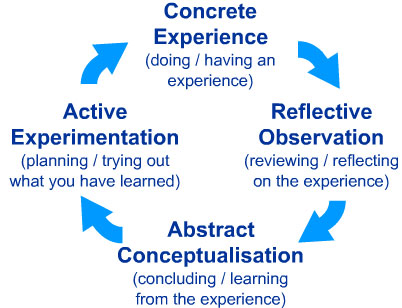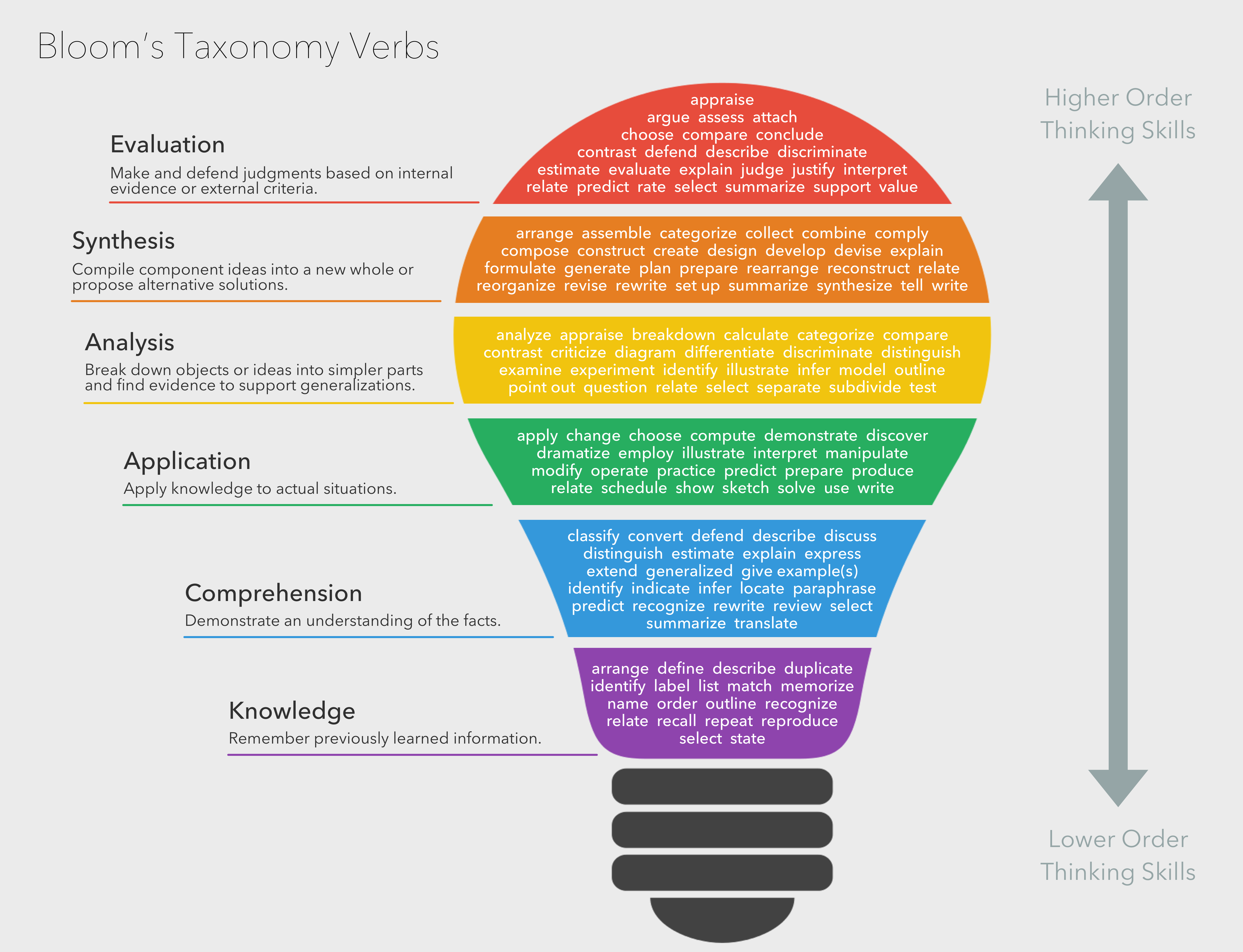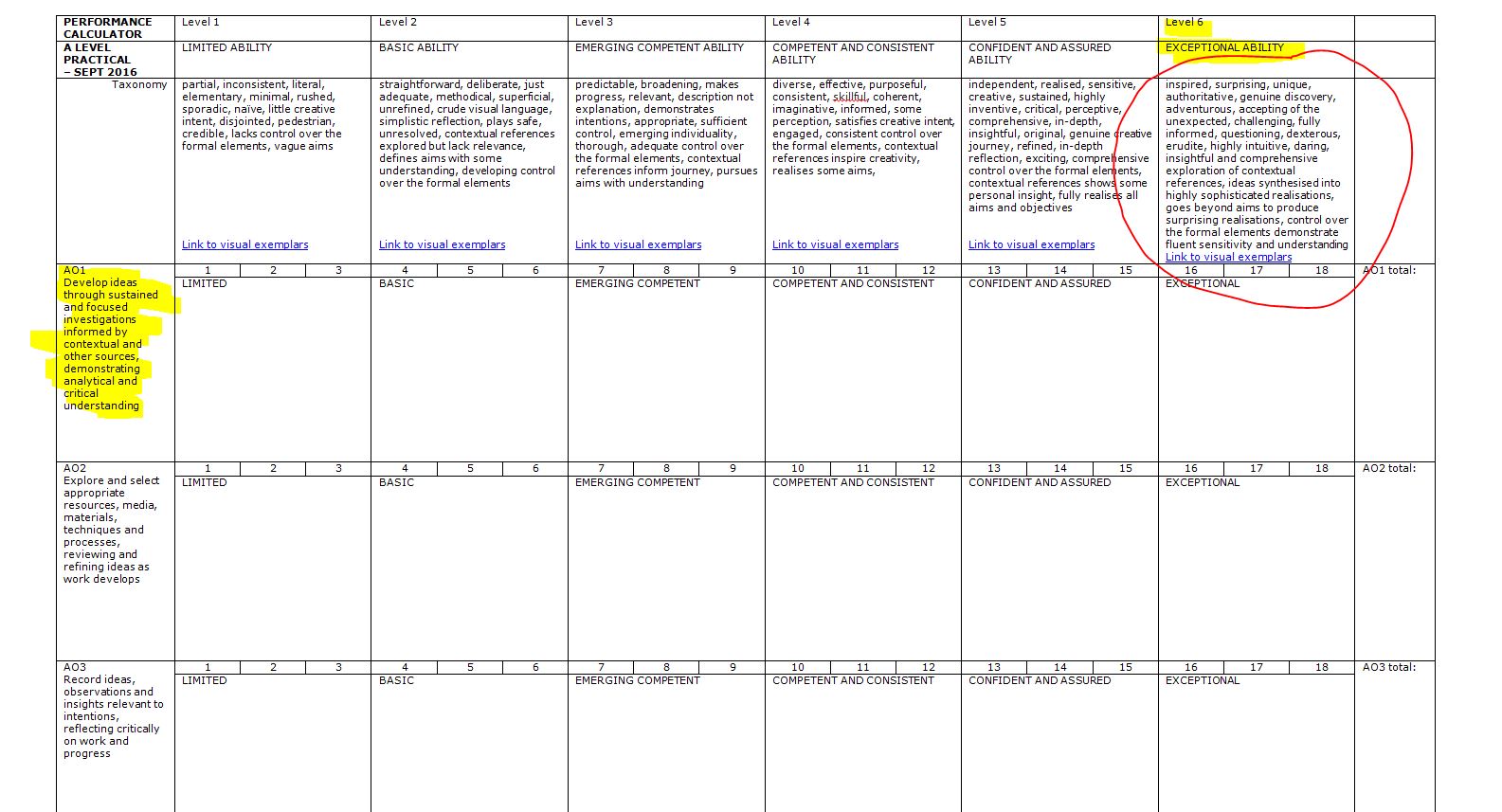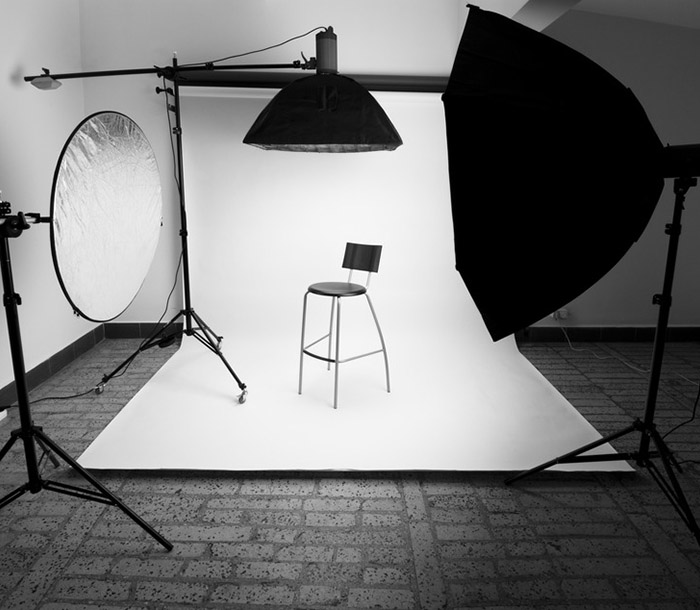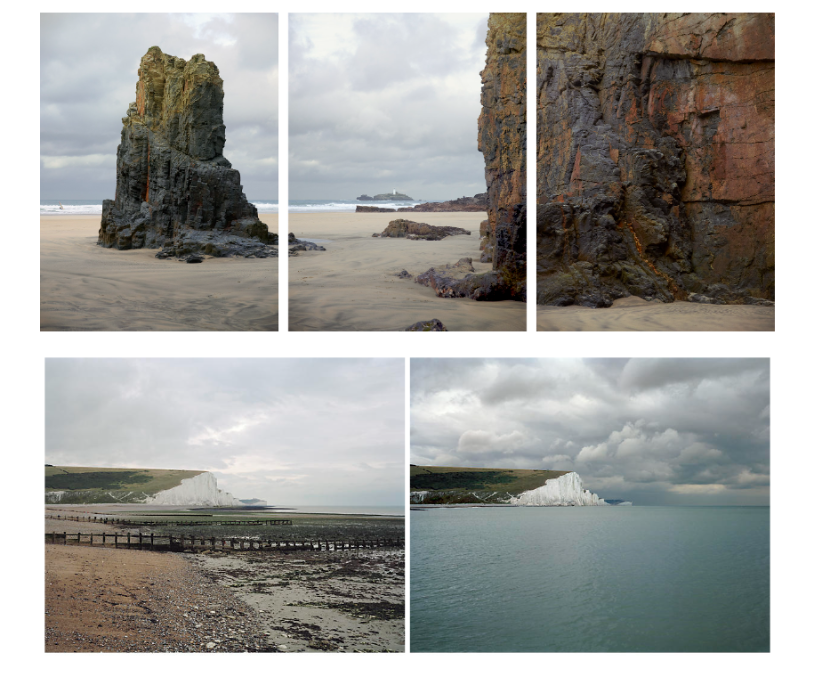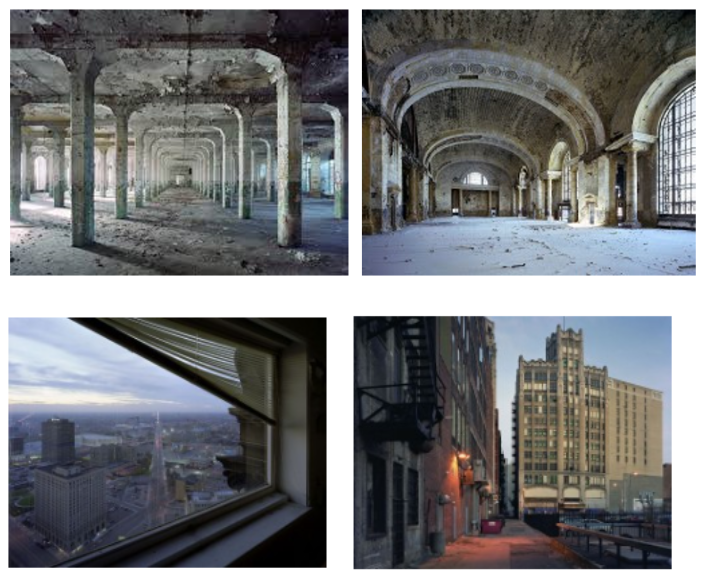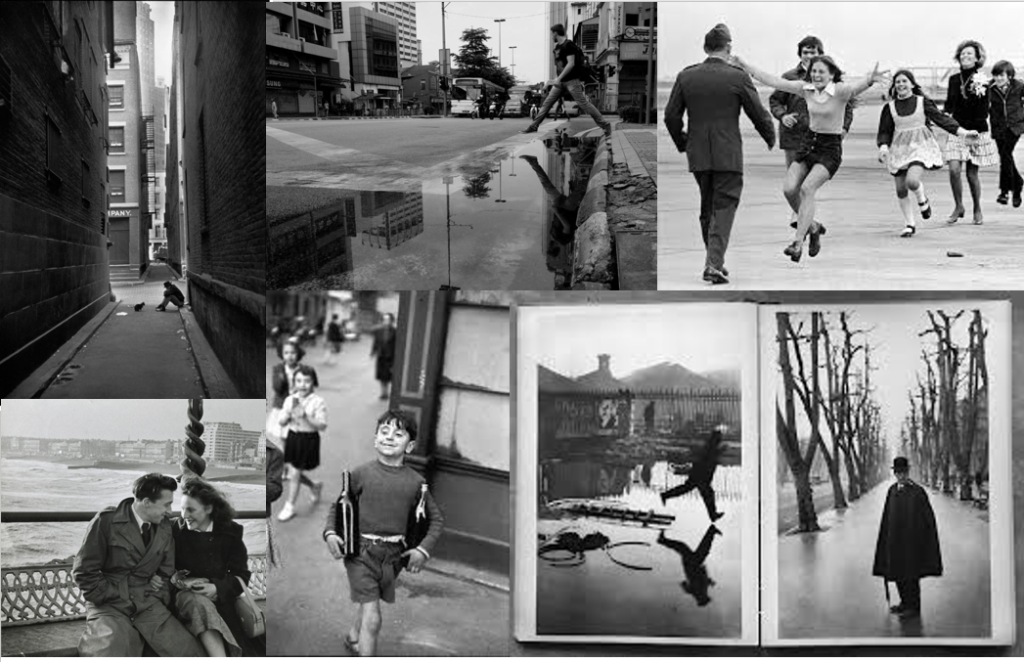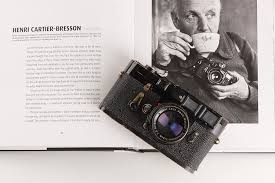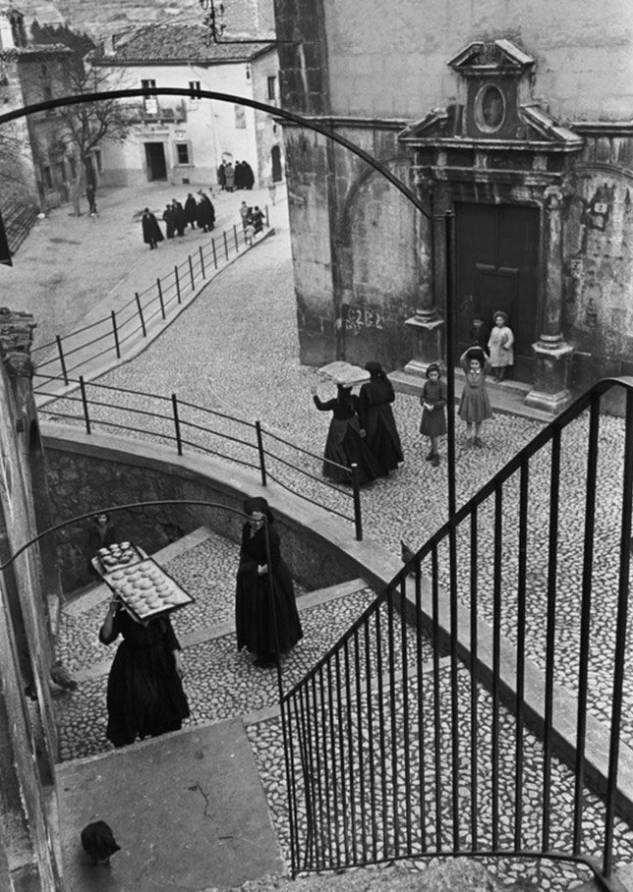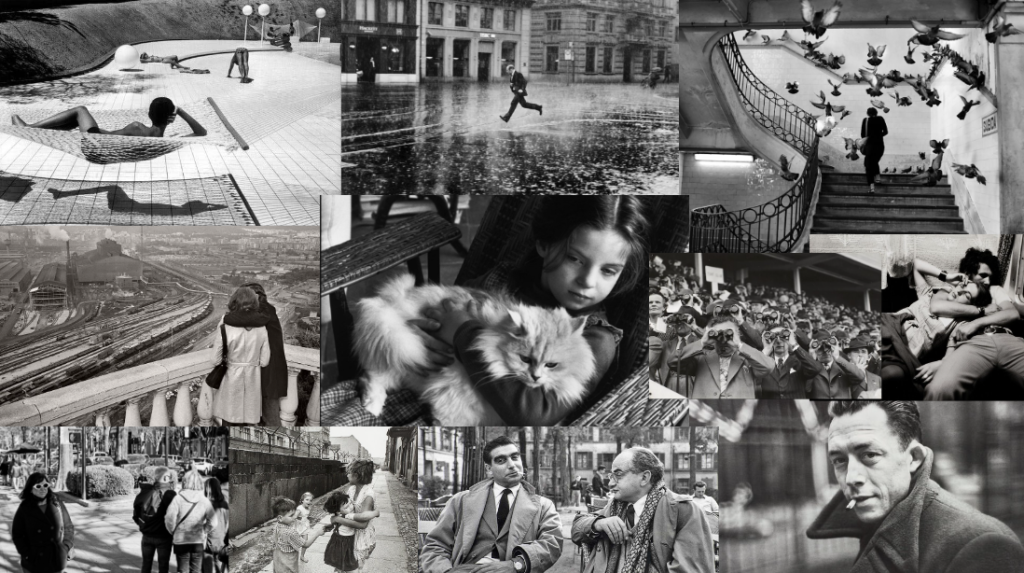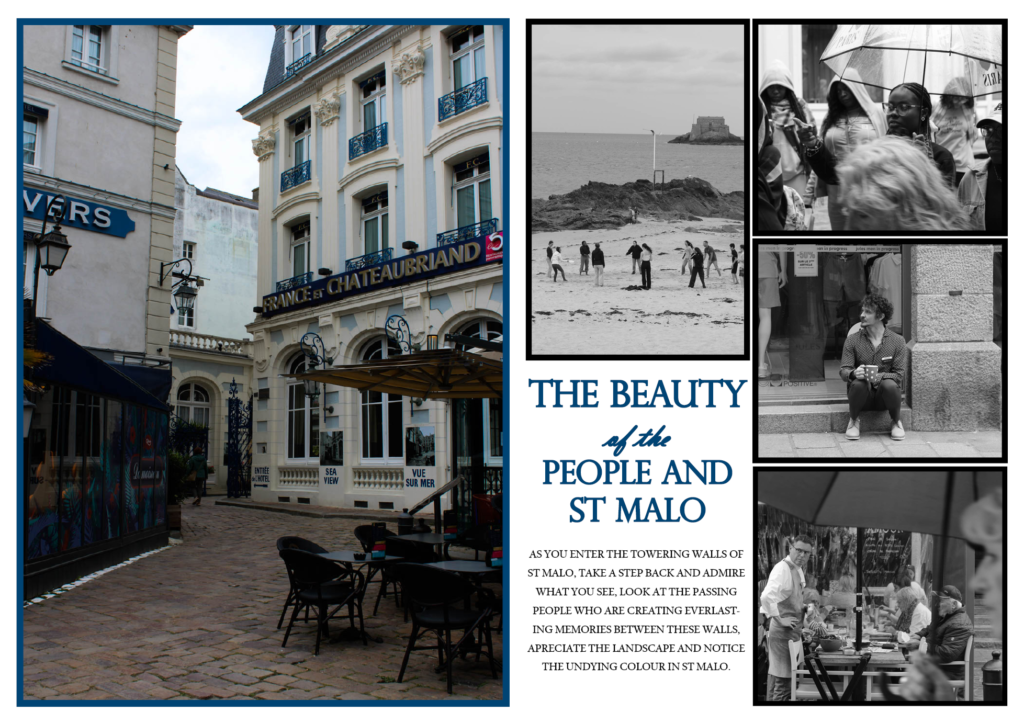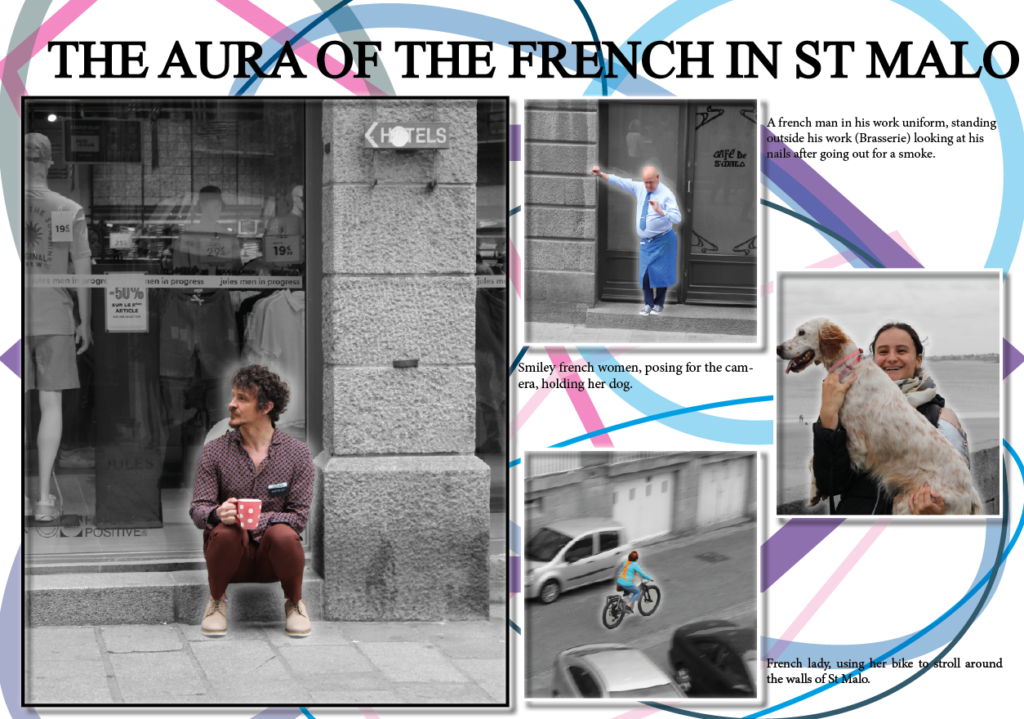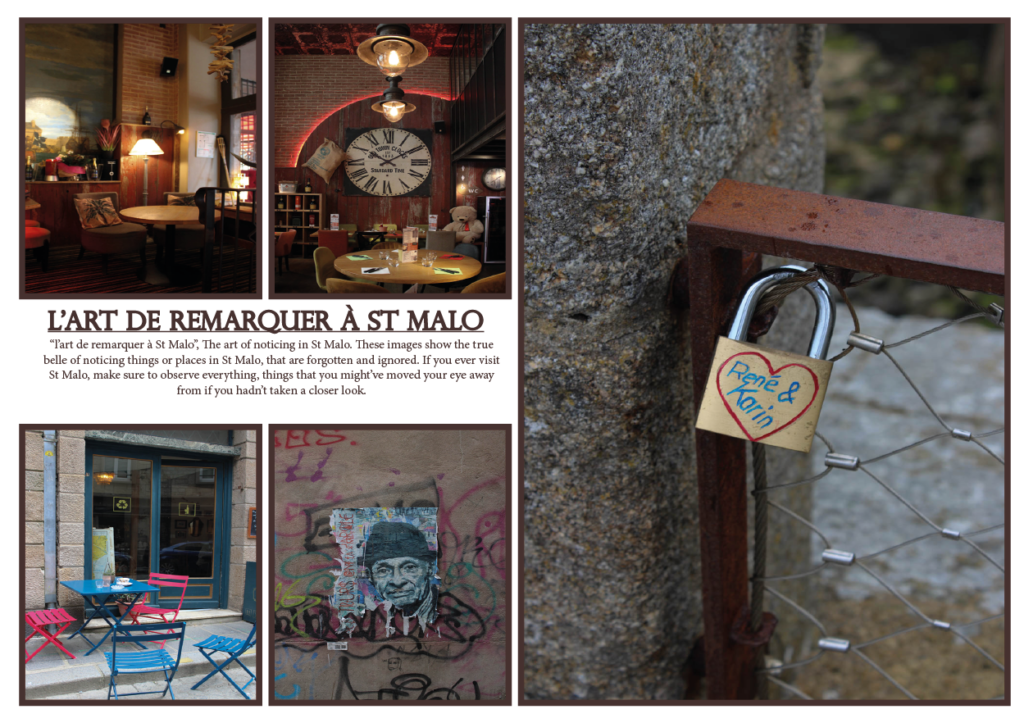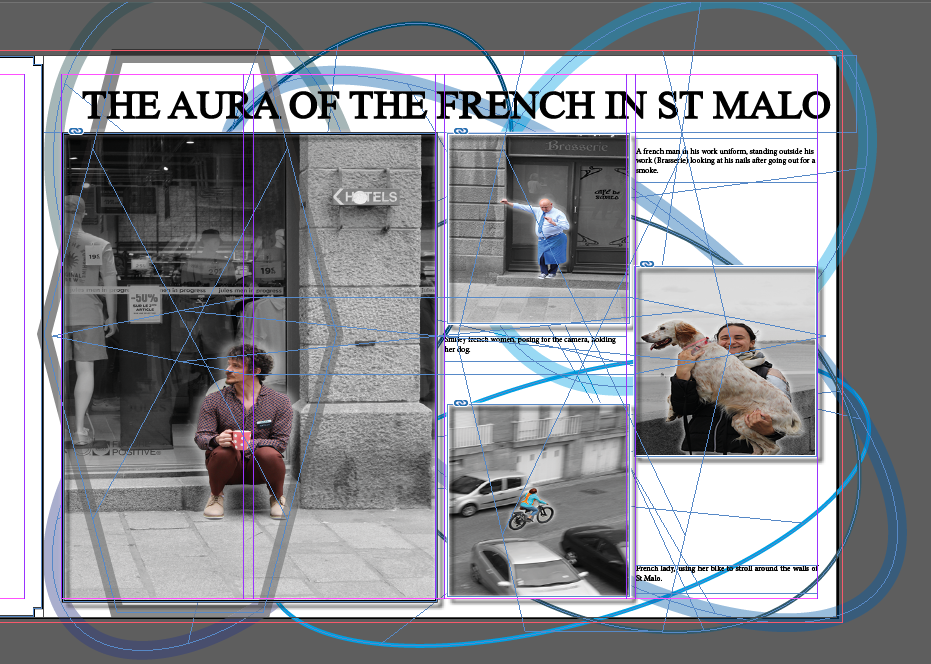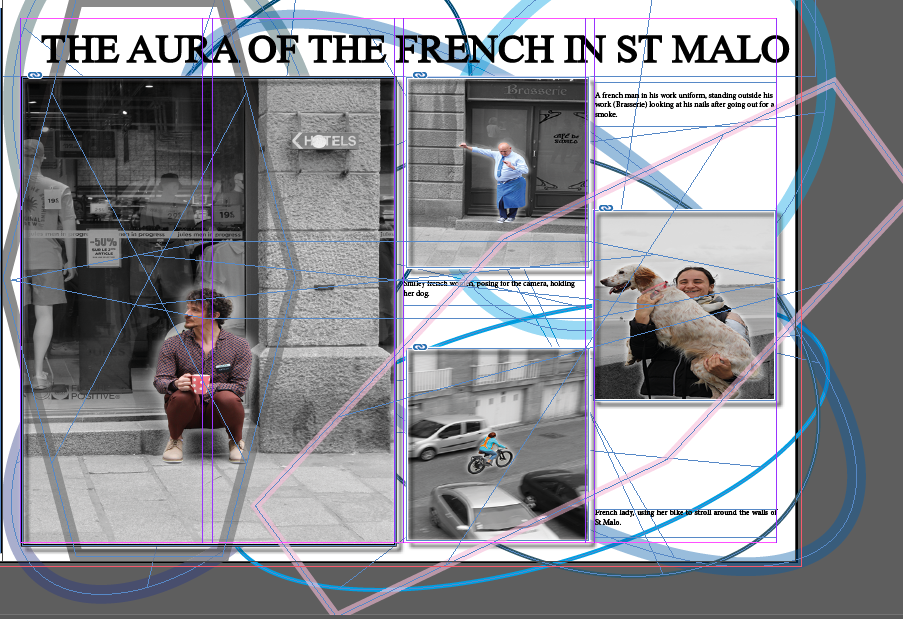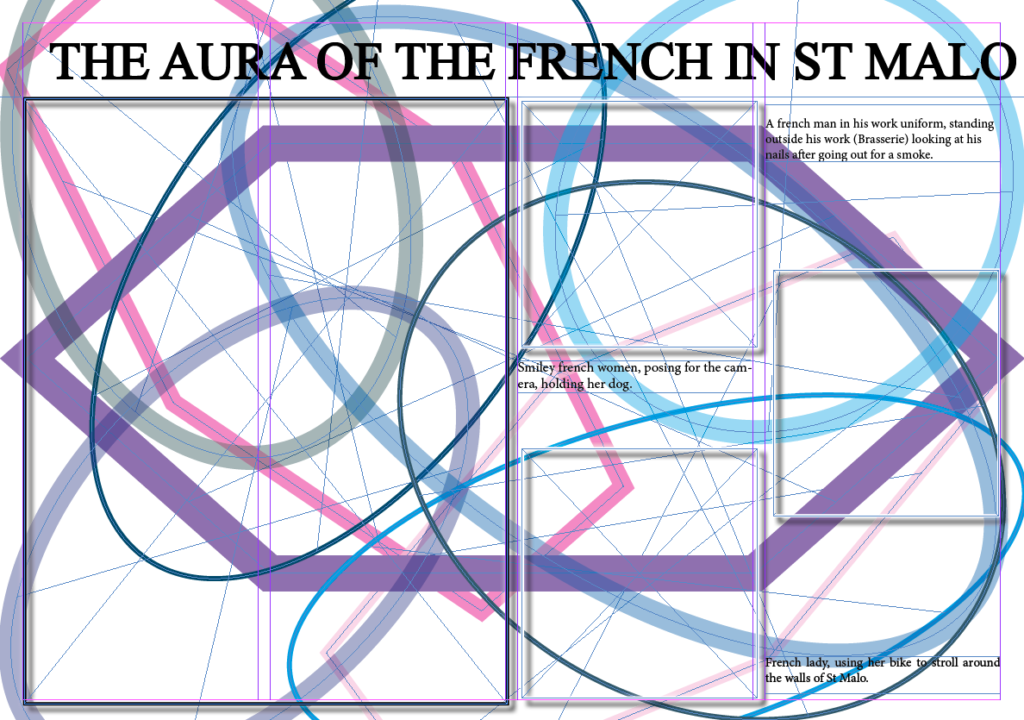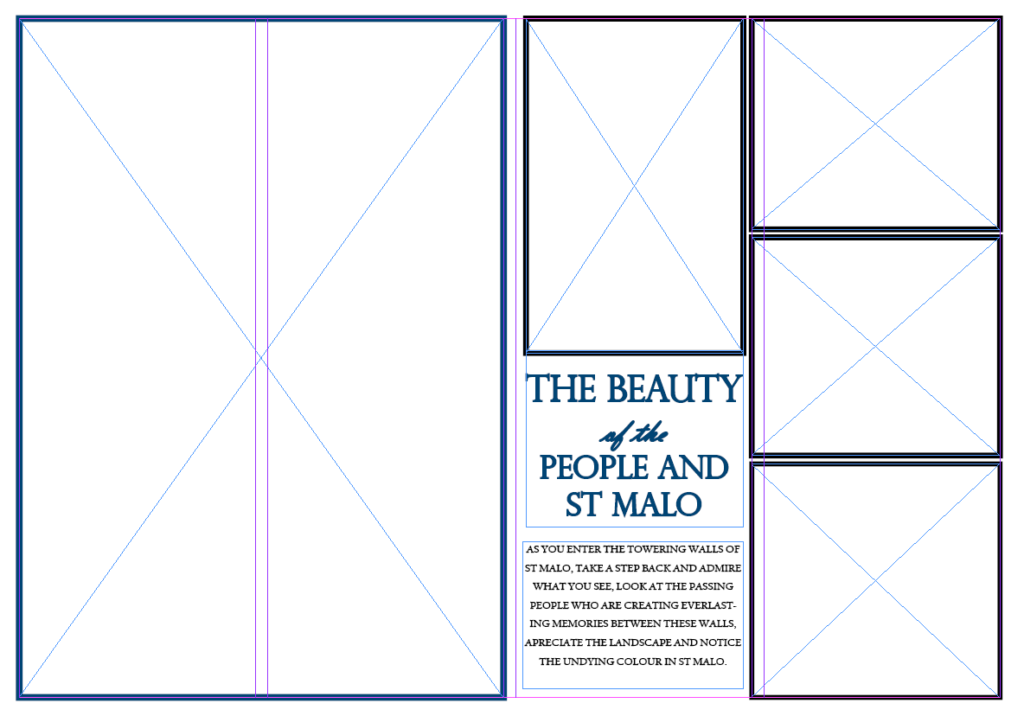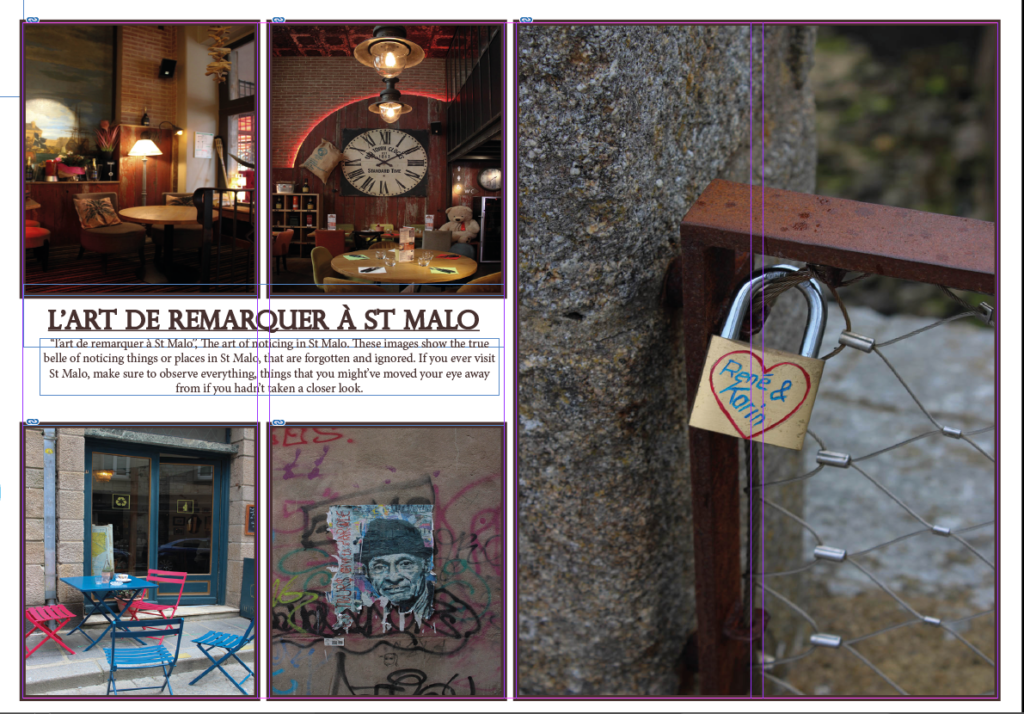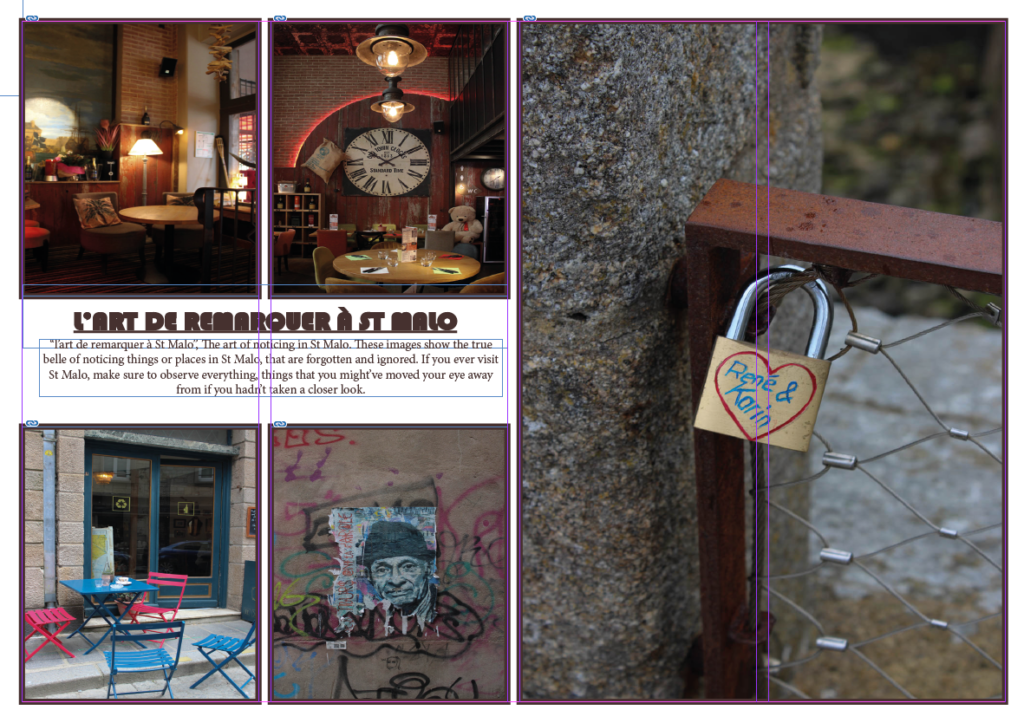Saint-Malo is a Port City located in Brittany, in the North-West of France. its Old city is surrounded by granite walls, which you can walk around. St.Malo is a popular place for tourism with lots of restaurants, hotels and shops.

Selected photos
Below are the images from the photoshoot I selected based off of how good/successful I felt they are and ones that best fit the decisive moment. n.b. Some of the photos I selected may have been taken by Tama as we were taking photos together.


Edits

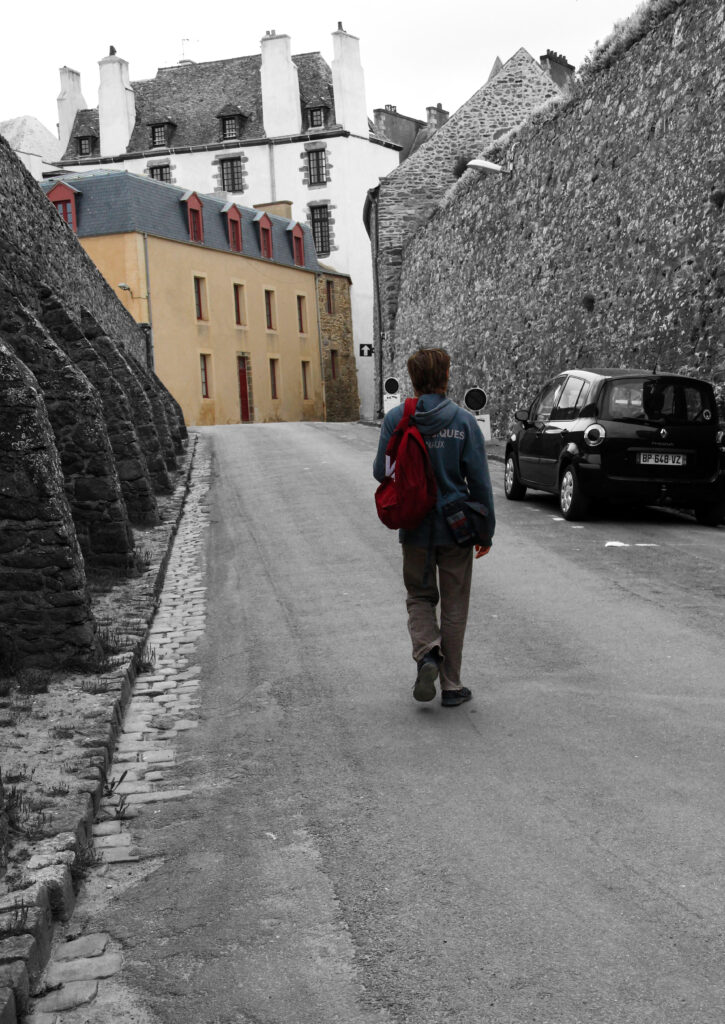
For this photo above I made the photo black and white except for the subject (Tama) and the house in the background, this makes the photo more interesting than the whole photo being in Black and white.
Edit 2


For the photo above of the man on the roof I cropped the photo to make him more lager and centred as well as applying a black and white with a higher contrast, as Henri Cartier-Bresson’s photos are in black and white and I wanted to incorporate his style. I decided to go a step further and add a Vignette which gives the photo more depth and tone and in my opinion makes the photo look a lot better.
Edit 3
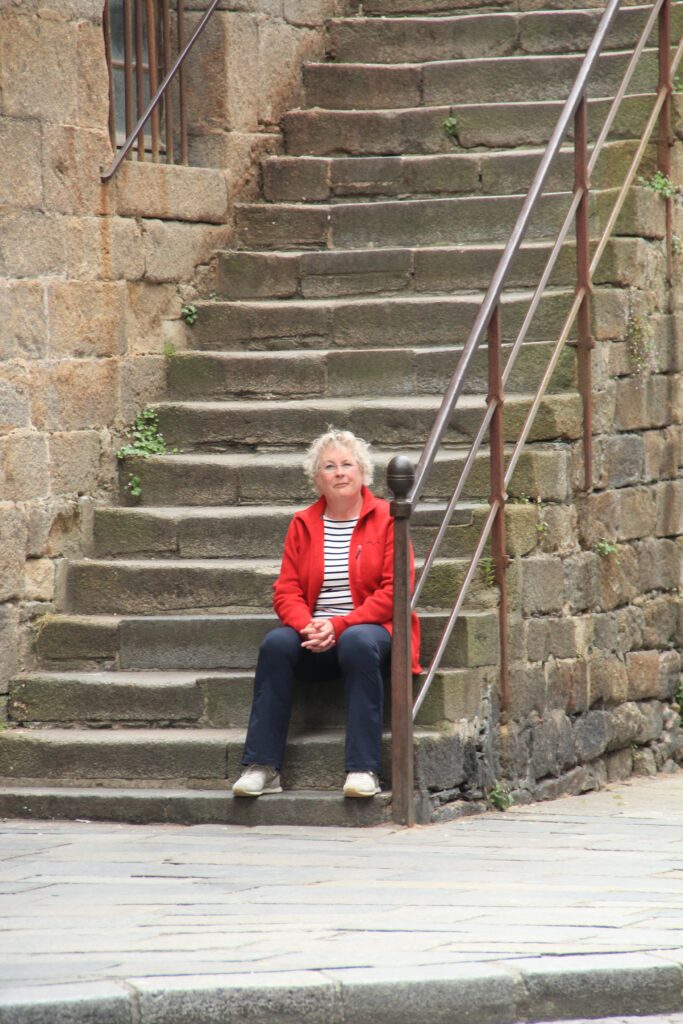

For this photo of the lady sitting on the stairs I did selective colour for the lady to make her stand out as the subject of the photo as well as providing a contrast to the whole image being in B&W, I also cropped to image to make her look closer in the photo.
Edit 4 & 5


I edited this photo of the pigeon by cropping it to make the pigeon more bigger and centred as well as making the background black and white so that the pigeon stands out. I also added a vignette which isn’t incredibly noticeable but creates depth, it works really well on black and white candid photos. I like this photo as I try and be a bit different by capturing the deceive moment for the pigeon instead of just for people.

I also experimented with generative AI to add more pigeons and birds to the photo.
It makes the photo look more lively and was just a bit of creative fun.
Edit 6 & 7


In the photo above of the man looking at the parking meter I experimented with blur by adding a Gaussian Blur in the background and made it black and white. I added a vignette and lowered the saturation of the person and the parking meter to make the colours blend in with the background more.

However, I wasn’t that pleased with the previous edit and felt like it can be better as I felt it looked too overedited and messy and the man’s face was grainy due to trying to make him look sharper.
So I edited the photo again but this time I made the background a less intense Lens blur this time and made the man and parking meter in black and white as well. Now I think the photo looks better than the previous edit and more simple yet effective.
-Choosing a final image-

Out of all the edits and photos I would say this is my final image, as not only is it interesting seeing a person on the roof, but I also like the way I edited this photo with the vignette and the contrast in the photo.
This photo is also a quite similar style to Cartier-Bresson’s as the photo is candid and there is the a sort of ‘intellectual pleasure’ as Henri Cartier would have said, with the composition of the rooftops in relation to where the guy is sitting and how it lines up.






